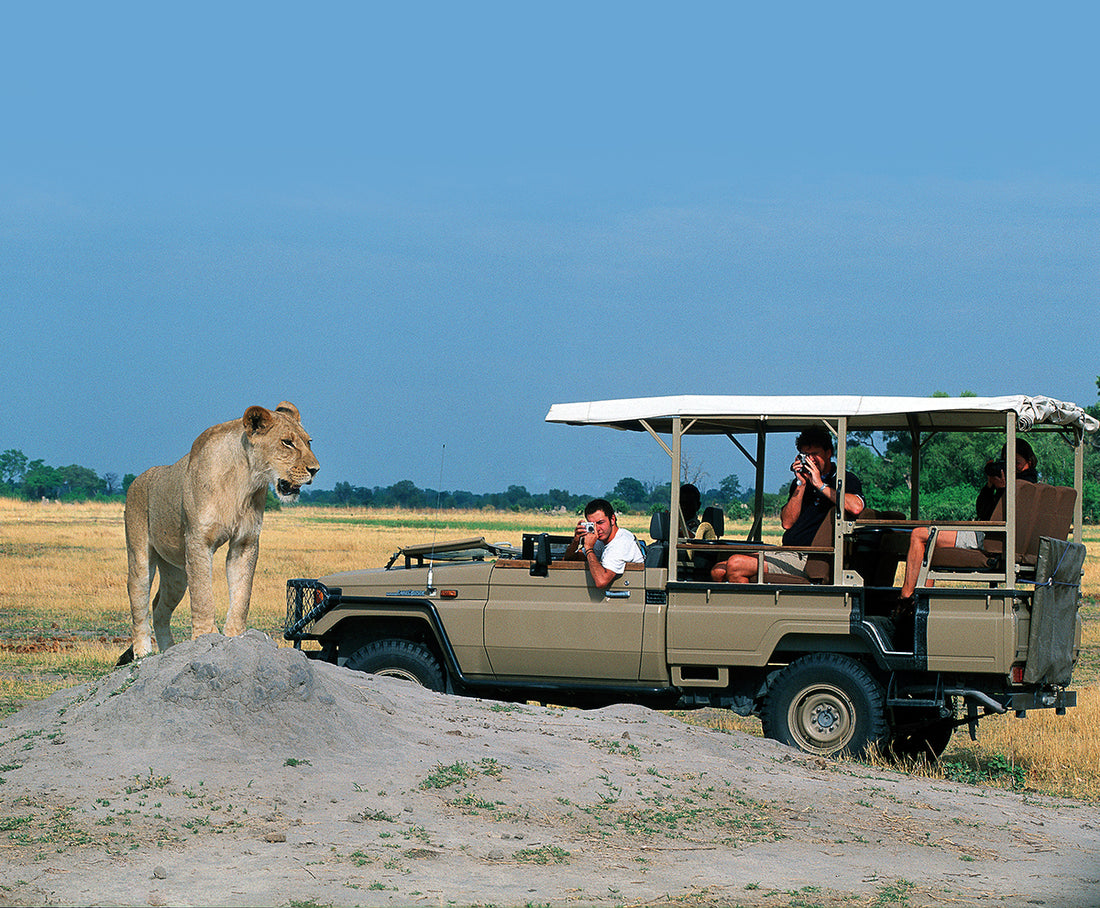We all love the fresh air and the untamed wilderness of a safari drive. To witness animals in their natural habitat is not only a privilege but also awe-inspiring. Now, to get the most of your game drive, here are a few tips to keep in mind.
The best time of day
Start your drive as early in the morning as possible, and continue until approximately 10am. Resume in mid-afternoon and stay out until sunset, or later if you have a guide with you.
The early morning and late afternoon trigger all kinds of activities in the African bush. This is when many animals are most active – the transition from dark to light finds nocturnal animals scurrying to their daytime hiding places, leopards doing their last rounds, hyena cubs playing outside their den and lions finishing off their night-time kill. Diurnal animals leave their sleeping places, sun and groom themselves or each other, and start foraging. At dusk, diurnal animals go to rest and the nocturnal ones appear.
Drives during the middle of the day are often disappointing. Many animals are resting in the shade of trees, ruminants are chewing the cud and predators are often sleeping, lying flat and therefore not easily seen.
Some animals, however, remain active during the entire day. Bulk herbivores such as elephants continue grazing or browsing, and baboons and monkeys forage all day, often in trees, or simply sit in groups socialising and interacting with one another. Predators that are sometimes active during the heat of the day are cheetah, wild dog and some of the mongooses.

Look and listen
Drive slowly, be alert and always expect the unexpected.
Look deep into the bush, have patience and watch for movement – the flick of an ear or whisk of a tail. Camouflage is vital for survival in the bush and colours and shapes blend perfectly into their surroundings. Listen for telltale sounds and alarm calls of animals and birds. The ‘alert’ posture of antelope is another sure sign that they suspect danger.
Where to look
Notice different habitats and know what to expect in which places. Some animals have a very specific habitat preference. Lions can be expected in almost all habitats while leopards will never go far from cover. Primates depend on trees for food and safety, and hippos need water deep enough to submerge their bodies. Klipspringers live only on rocky outcrops, but grazers are often found in herds in the open where they feed on different kinds and heights of grasses. Browsers tend to be solitary or in small groups. They feed at different heights and from different kinds of plants.
How to drive
Approach animals slowly and in an indirect way. Give them enough space so as not to feel threatened. Shy animals (especially birds) should be approached in stages. If you get too close, they will feel threatened and flee. Animals will not attack unless provoked to do so. Give approaching elephants enough space to pass, and switch off your engine and anything else making a noise. Animals usually don’t associate humans with vehicles. Stay in your vehicle at all times. Do not break the outline of the vehicle with any part of your body by standing up, waving or leaning out of a window.

Binoculars
Binoculars are not essential, but will enhance your enjoyment during game drives. A good pair of binoculars will focus sharply both on near and distant objects, show only one image when viewing, and have coated lenses to reduce the amount of light loss as it passes through the optical system.
Binoculars have two specifying numbers, e.g. 7 x 50. The first number indicates the power of magnification and the second the diameter in millimetres of the objective lens (the big end of the binoculars). The most suitable binoculars are those with a magnification power of between seven and ten. The higher the power, the greater the magnification, but the steadier your hands should be.
The larger the objective lens, the more light it transmits, increasing brightness of the image, but the field of view becomes smaller and the binoculars heavier. Favourite game viewing binoculars are 7 x 35 and 8 x 32.
Photography
Take memories back home. Digital cameras are easy to use. Make sure you get a sharp photograph by setting the ISO to about 400. To avoid camera shake, try to keep the shutter speed faster than the length of the lens, i.e. if you are using a 100mm lens, set the ISO and f-stop so that the shutter speed is 1/125 per second or faster.
It is not always possible to get very close to animals, and telephoto lenses are therefore very useful. The most practical lens is anything between 100mm and 400mm. The best light is just after sunrise and just before sunset. Try to keep the sun behind you to eliminate shadows on the animal. When the light is bad, use a flash. If the flash is not strong enough to light the animal, increase your ISO setting to about 800 ISO.
The most important rule in photography is: Look first. Then photograph.
These, and other helpful tips can be found in the book Game Drive Okavango and Chobe by Philip and Ingrid van den Berg, Heinrich van den Berg. Text by Ingrid van den Berg.


